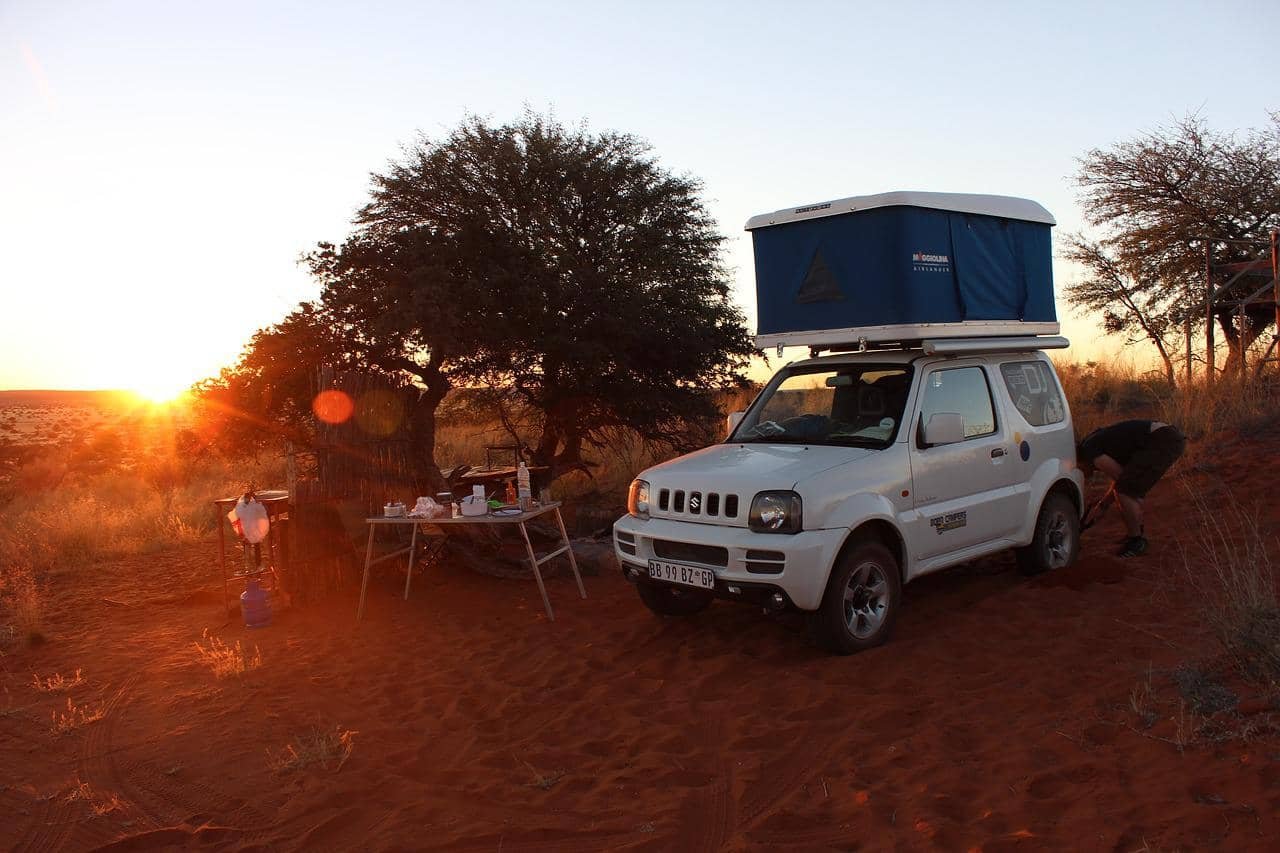Is car camping on the ground becoming obsolete? Rooftop tents have made road trip sleeping arrangements faster, more comfortable, more convenient, and easier to use than ever before. However, what does a rooftop tent (RTT) mean? A roof tent, also known as a rooftop tent, is an accessory that can be attached to the roof or bed of a vehicle, allowing users to sleep in relative safety and comfort above the car while leaving the internal load-space free.
Roof tents first appeared in Western Europe in the 1930s. However, the rooftop tent you get should be able to hook to your car’s roof rack and open like a clamshell to reveal a sleeping experience far more opulent than anything you’ve ever experienced on the ground. That said, Why then should you employ one?
1. Sleeping off Ground Level

Most rooftop tents require a telescoping ladder to access them. If it rains, you won’t be sleeping in a puddle or a mud pit. It’s also easier to catch a breeze that allows your tent to stay ventilated all the time. In contrast, you’re off the ground. Plus, being higher off the ground gives you a better perspective – it’s almost like being in a treehouse.
Additionally, being elevated also helps to keep dirt and debris out of your tent. For example, camping on sand or dusty ground, you can climb up the ladder, brush off your shoes, and enter the tent without bringing the dirt inside.
2. Rocky, Uneven Ground Is No Problem

All you need to park a rooftop tent is a relatively level spot. You don’t need to look for a place free of rocks and roots since you’ll sleep on a flat surface. Hence, areas that would have been uncomfortable sleeping on the ground are now available: Parking lots, gravel river banks, rooty forest campsites, you name it—or going camping after a couple of rainy days? Muddy, wet ground is also no problem. Never again will you worry about a river running through your tent during a rainstorm.
3. Setup Is Super-Fast
Most RTTs are straightforward to set up: Place your car in a sufficiently flat spot, unlock the latches, and your tent will spring up or fold open on its own. Significantly, RTTs are frequently quicker and simpler to set up than ground tents because there are no poles to attach, even though some tents have annexes that take a few minutes to set up.
Furthermore, most RTTs enables you to leave your bedding in place even while the tent is packed down, guaranteeing that everything is ready to go when you open the tent. However, you would have to inflate an air mattress or sleeping pad in a ground tent before laying out your sleeping bag.
4. Save Space Inside Your Vehicle
You may keep your expensive goods locked up in your vehicle even when sleeping because you don’t require the truck bed area for sleeping. This eliminates the need to rearrange your entire vehicle whenever you want to sleep.
Furthermore, you don’t need to store a tent, sleeping bags, or air mattresses in your vehicle because everything you need to sleep on is already ready to go up top in your RTT. This allows you to make room in your car for other supplies.
5. Comfortable Sleeping platform
RTTs hold comfy mattresses; perhaps you might not feel the same if you have the most luxurious ground tent and air mattress ever created. Still, rooftop tents generally include high-density memory foam mattresses that are far more comfortable than air mattresses. Additionally, rooftop tents have a hard bottom (typically fiberglass, steel, aluminum, or something similar) that acts as a perfectly smooth base since sleeping on rocky ground is unpleasant, even with an air mattress. In terms of overall comfort, sleeping in a rooftop tent is much like sleeping in your bed at home.
6. Durability

If you’ve ever slept in a ground tent during a downpour or snowstorm, you are aware that the tent’s material will likely flap all night, causing you to wake up in a pool of chilly water and maybe causing permanent damage to the tent. It’s incredibly terrifying if you fall asleep, only to be awoken by the battered side of the tent blown so flat to the ground that it suffocates you. Worse, your tent is ripped from its stakes, and you are hamstrung around the campground.
Fortunately, a rooftop tent is exempt from all of these issues. Many contain a sturdy fiberglass panel that rises straight up or at an angle to shield you from most elements. Although most RTTs still have canvas sides that can flap in the wind, the canvas is much more durable, and many have systems that allow you to crank the canvas extra tight if it’s windy.
However, most ground tents are lightweight and portable, whereas RTTS is designed to be strong and long-lasting because your vehicle carries all the weight.
Bottomline
RTTs are built of more robust materials that protect against the weather elements far better than ground tents so that you may use them in practically any weather. You can camp all year long, anywhere, and throughout any season using RTTs as they are flexible, durable, and don’t need to occupy much space during transportation.
Significantly, as long as your vehicle can safely transport you to where you want to camp, your RTT will keep you warm and dry. Some RTTs include four-season accessories like extra insulation, weather hoods, etc.










